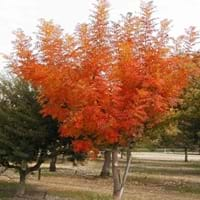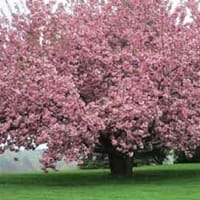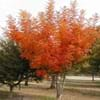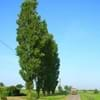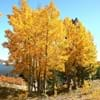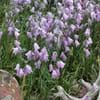Life Span
Perennial
Annual and Perennial
Type
Tree
Flowering Plants, Fruit, Tree
Origin
China
Hybrid origin
Types
Not Available
Not Available
Habitat
Mountains, Rocky areas
Bushlands, gardens, Homesteads, In desert grasslands, Lowland, Shady Edge, Tropical areas
USDA Hardiness Zone
6-9
5-8
AHS Heat Zone
9-6
Not Available
Sunset Zone
4, 5, 6, 7, 8, 9, 10, 11, 12, 13, 14, 15, 16, 17, 18, 19, 20, 21, 22, 23
Not Available
Habit
Oval or Rounded
Oval or Rounded
Flower Color
Red, Green
White, Pink
Flower Color Modifier
Bicolor
Bicolor
Fruit Color
Red, Blue, Green, Dark Blue, Black
Not Available
Leaf Color in Spring
Green, Light Green
Green
Leaf Color in Summer
Green, Dark Green
Dark Green
Leaf Color in Fall
Red, Orange, Pink
Not Available
Leaf Color in Winter
Not Available
Not Available
Plant Season
Summer, Fall
Spring, Fall
Sunlight
Full Sun, Partial Sun
Not Available
Type of Soil
Clay, Loam, Sand
Clay, Loam
The pH of Soil
Acidic, Neutral, Alkaline
Acidic, Neutral, Alkaline
Soil Drainage
Well drained
Average
Bloom Time
Early Spring, Spring
Summer, Late Summer, Early Fall
Tolerances
Pollution, Drought, Soil Compaction
Not Available
Where to Plant?
Ground
Ground
How to Plant?
Divison, Seedlings, Stem Planting, Transplanting
Seedlings, Stem Cutting
Plant Maintenance
Medium
Medium
Watering Requirements
Average Water Needs, Water once every two or three weeks, Water when top layer of soil becomes dry
Keep the ground moist but not water-logged, Requires watering in the growing season
In Summer
Lots of watering
Lots of watering
In Spring
Moderate
Moderate
In Winter
Average Water
Average Water
Soil pH
Acidic, Neutral, Alkaline
Acidic, Neutral, Alkaline
Soil Type
Clay, Loam, Sand
Clay, Loam
Soil Drainage Capacity
Well drained
Average
Sun Exposure
Full Sun, Partial Sun
Full Sun, Partial Sun
Pruning
Remove damaged leaves, Remove dead branches, Remove dead leaves
Prune prior to new growth, Remove deadheads, Shape and thin as needed
Fertilizers
All-Purpose Liquid Fertilizer
Organic Manure
Pests and Diseases
Insects, Red blotch, Rodent
Aphids, Mealy bugs, Mites
Plant Tolerance
Drought, Frost
Not Available
Flowers
Insignificant
Showy
Flower Petal Number
Not Available
Semi-Double
Foliage Texture
Medium
Medium
Foliage Sheen
Glossy
Matte
Attracts
Birds
Not Available
Allergy
no allergic reactions
no allergic reactions
Aesthetic Uses
Beautification, Landscape Designing, Showy Purposes
Ornamental use, Showy Purposes
Beauty Benefits
Not Available
Not Available
Environmental Uses
Air purification
Air purification
Medicinal Uses
No Medicinal Use
No Medicinal Use
Part of Plant Used
Seeds, Stem
Flowers, Fruits
Other Uses
Application in Furniture, Decoration Purposes, Showy Purposes, Used in biomass, Used in Furniture
Culinary use, Showy Purposes, Used as Ornamental plant
Used As Indoor Plant
No
No
Used As Outdoor Plant
Yes
Yes
Garden Design
Shade Trees, Street Trees
Feature Plant, Shade Trees, Street Trees
Botanical Name
PISTACIA chinensis
PRUNUS 'Hally Jolivette'
Common Name
Chinese Mastic, Chinese Pistachio
Flowering Cherry, Hally Jolivette Flowering Cherry
In Hindi
चीनी पिस्ता
चेरी
In German
chinesische Pistazie
Blühende Kirsch
In French
pistache chinois
cerisier
In Spanish
pistacho chino
floración de la cereza
In Greek
Κινέζοι Φιστίκι
Άνθιση κερασιών
In Portuguese
Pistache chinês
cereja de florescência
In Polish
Chiński Pistacje
Kwitnienie wiśni
In Latin
LENTISCUS Chinese
florentem cerasis
Phylum
Magnoliophyta
Tracheophyta
Class
Magnoliopsida
Magnoliopsida
Family
Anacardiaceae
Rosaceae
Clade
Angiosperms, Eudicots, Rosids
Angiosperms, Eudicots, Rosids
Tribe
Rhoeae
Not Available
Subfamily
Not Available
Amygdaloideae
Number of Species
Not Available
Season and Care of Chinese Pistachio and Flowering Cherry
Season and care of Chinese Pistachio and Flowering Cherry is important to know. While considering everything about Chinese Pistachio and Flowering Cherry Care, growing season is an essential factor. Chinese Pistachio season is Summer and Fall and Flowering Cherry season is Summer and Fall. The type of soil for Chinese Pistachio is Clay, Loam, Sand and for Flowering Cherry is Clay, Loam while the PH of soil for Chinese Pistachio is Acidic, Neutral, Alkaline and for Flowering Cherry is Acidic, Neutral, Alkaline.
Chinese Pistachio and Flowering Cherry Physical Information
Chinese Pistachio and Flowering Cherry physical information is very important for comparison. Chinese Pistachio height is 760.00 cm and width 760.00 cm whereas Flowering Cherry height is 180.00 cm and width 240.00 cm. The color specification of Chinese Pistachio and Flowering Cherry are as follows:
Chinese Pistachio flower color: Red and Green
Chinese Pistachio leaf color: Green and Light Green
Flowering Cherry flower color: White and Pink
- Flowering Cherry leaf color: Green
Care of Chinese Pistachio and Flowering Cherry
Care of Chinese Pistachio and Flowering Cherry include pruning, fertilizers, watering etc. Chinese Pistachio pruning is done Remove damaged leaves, Remove dead branches and Remove dead leaves and Flowering Cherry pruning is done Prune prior to new growth, Remove deadheads and Shape and thin as needed. In summer Chinese Pistachio needs Lots of watering and in winter, it needs Average Water. Whereas, in summer Flowering Cherry needs Lots of watering and in winter, it needs Average Water.
